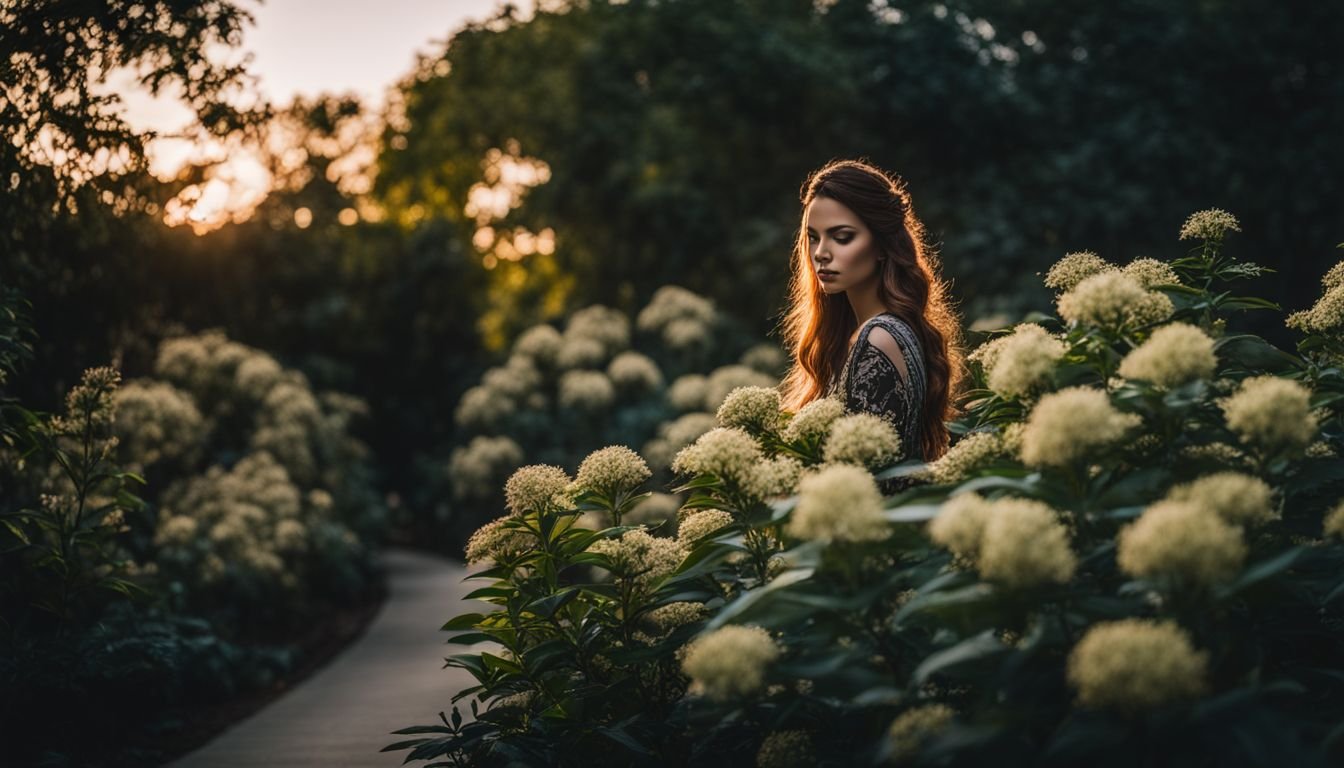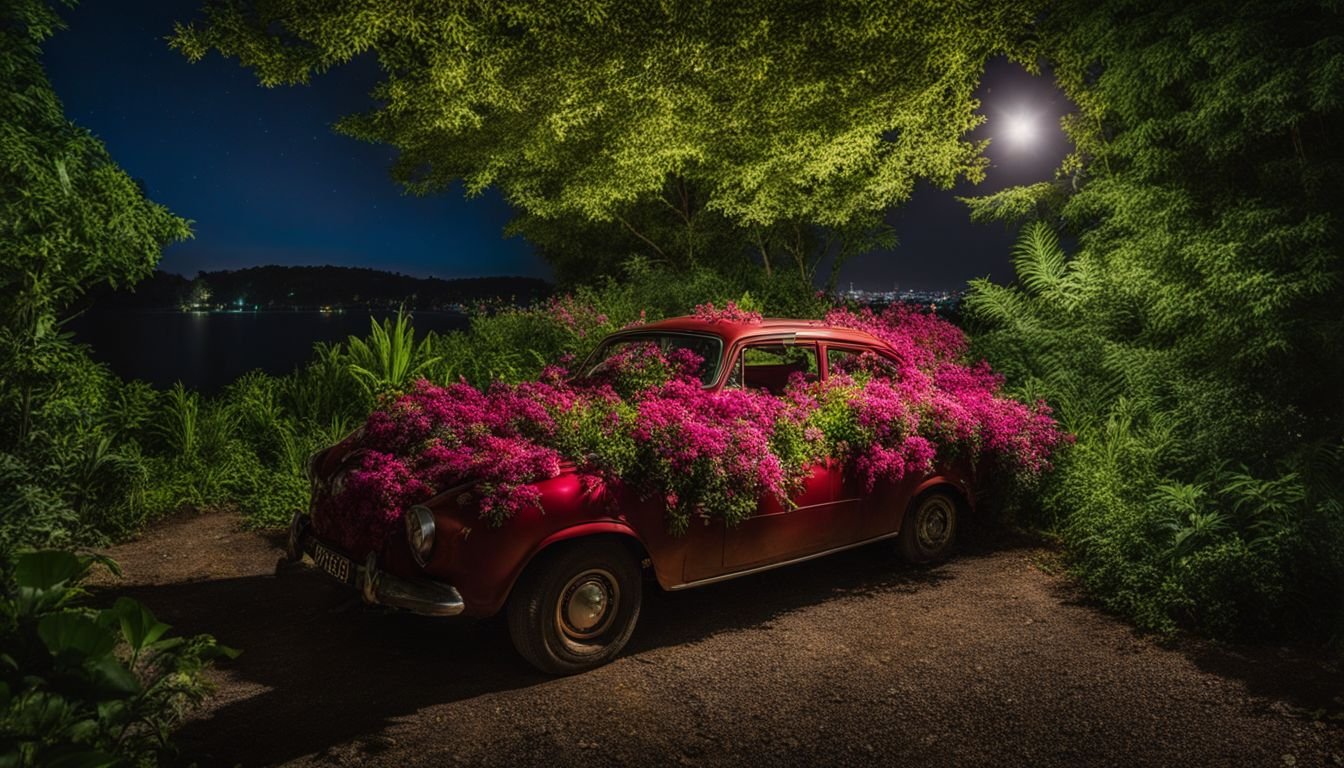Gardening in Australia offers an array of plant choices, but it’s vital to know both the delights and risks they bring. The Cestrum nocturnum, or night-blooming jasmine, is a fragrant addition that has enchanted gardeners with its nighttime blooms.
This post will provide key insights into the wonders and warnings of incorporating this plant into your Aussie garden haven. Discover why night jessamine captivates yet cautions those who grow it.
Key Takeaways
- Cestrum nocturnum, known as night – blooming jasmine, stands out in Australian gardens with its white blossoms that open at night and release a strong sweet scent.
- Although beautiful, this shrub is toxic and can cause health problems for humans and animals if ingested or if too much of its fragrance is inhaled.
- Native to the West Indies, Cestrum nocturnum has become an invasive weed in Australia, threatening local ecosystems by outcompeting native plants.
- Birds and wildlife contribute to the spread of this plant by eating and dispersing its seeds; gardeners also unintentionally help it spread through cuttings.
- Managing Night Blooming Jasmine requires careful pruning to keep it from getting out of control; wearing gloves can prevent skin irritation when handling the plant.
Describing Cestrum Nocturnum

Cestrum nocturnum, a striking shrub with an intriguing profile, weaves its way through the tapestry of Australian gardens as both a beauty and a quandary. It stands out with its luminous flowers that unfurl under the cloak of night, inviting admiration and caution in equal measure.
Appearance and Characteristics
The evergreen woody shrub of Cestrum nocturnum stands out with its slender branches and narrow lanceolate leaves, capable of reaching heights up to 4 meters. It’s a stunner in any garden, thanks to its greenish-white tubular flowers that unfurl under the cover of night, releasing a strong sweet perfume into the air.
Known also as night-blooming jasmine or queen of the night, this member of the Solanaceae family produces white berries about 10mm long and 5mm in diameter. These berries add an extra visual appeal during daylight but are deceptive with their toxicity—gardeners handle them with care!
Native and Naturalised Locations
Having explored the distinctive appearance of Cestrum nocturnum, it’s also fascinating to delve into where this plant feels most at home. Originally hailing from the West Indies, night-blooming jasmine has made quite a journey across the world.
Its alluring fragrance and appealing look allowed it to secure a spot in gardens far beyond its native soil, notably taking root in South Asia where it has become naturalised.
Australia’s warm climate offered an ideal setting for Cestrum nocturnum to thrive and eventually turn into an invasive weed. It spread through regions with similar tropical and subtropical climates, including New Zealand and parts of the United States.
In these new environments, garden escapee Cestrum nocturnum didn’t hold back—it established dense thickets that could outcompete local flora, demonstrating why mindful weed management is crucial for maintaining ecological balance.
Beauty of Cestrum Nocturnum

The enchanting Cestrum Nocturnum, commonly known as the night blooming jasmine, offers an olfactory delight with its intoxicating fragrance that permeates Australian gardens under the cloak of darkness.
This botanical gem becomes a nocturnal theatre where its white-yellow blossoms take centre stage, casting their allure on warm evenings.
Night Blooming Jasmine
As dusk falls, the Night Blooming Jasmine, or Cestrum nocturnum, wakes up and starts its fragrant show. This captivating shrub unfurls its white blooms under moonlight and releases a sweet scent that can fill an entire garden.
Its powerful perfume becomes the backdrop for evening gatherings and is often strongest on warm summer nights.
Caring for this night bloomer is a task fit for those who admire both beauty and challenge. It flourishes in full sun to part shade but requires attention to prevent it from spreading uncontrollably.
Gardeners must prune it regularly to maintain shape and curb its invasive nature. Those besotted by its aroma should plant Night Blooming Jasmine downwind of living spaces due to its toxic properties which include solanine, known to irritate if not handled with care.
Fragrance and Flowering Aspects
Continuing from the enchanting visual display, Cestrum nocturnum elevates the sensory experience with its fragrance. The shrub releases a powerful, sweet perfume that fills gardens at night, making it a prized addition for those who enjoy evening scents.
This characteristic has earned it common names like ‘lady of the night’ and ‘night blooming jessamine’, highlighting its nocturnal allure. Its flowers open in cymose inflorescences, exuding aromas most potent after dark.
Experts plant these fragrant beauties near windows or outdoor seating areas to maximise their sweet impact on subtropical evenings. Home gardeners appreciate how Cestrum nocturnum’s scent can transform an ordinary backyard into a nighttime oasis.
Despite being part of the potato family—a group not typically known for pleasant odours—this species stands out as an aromatic gem that comes alive when most plants sleep.
Dangers of Cestrum Nocturnum
While Cestrum nocturnum’s fragrant blossoms can enchant many gardeners, it harbours a darker side that demands attention. This plant’s invasive tendencies and toxicity present real threats to Australian ecosystems and the health of both humans and animals within them.
Invasive Potential
Cestrum nocturnum’s ability to invade ecosystems poses a significant threat to Australian gardens. It outcompetes native species, merging seamlessly into local habitats due to its robust and rapid growth.
The plant disperses far and wide as birds and other wildlife feed on its berries, unknowingly aiding in the expansion of this invasive species.
Gardeners often find it tough to control Cestrum nocturnum because it spreads not only through seeds but also via cuttings or pruned pieces that take root easily. Its presence in Auckland has raised serious concerns, prompting investigations into the necessity for regulatory action.
Effective weed control strategies are essential to prevent Cestrum parqui from undermining the diversity of our natural flora.
Toxicity to Humans and Livestock
Moving beyond its invasive roots, the danger of Cestrum nocturnum extends to a more pressing concern: its toxicity. If humans breathe in too much of this plant’s fragrance or come into contact with it, they might experience irritation and breathing problems.
More severe poisoning can trigger headaches, waves of nausea, and dizziness that shouldn’t be taken lightly.
The risk is even greater for livestock who might graze on Cestrum nocturnum leaves or berries. The toxic nature of these parts can prove fatal for animals if ingested, especially when they consume immature poisonberries.
Farmers must take care to ensure their animals steer clear from areas where night blooming cestrum thrives to prevent tragic losses.
Conclusion
Garden enthusiasts marvel at the allure of Cestrum nocturnum, its night-time blooms enchanting our senses. Yet, we must respect its darker side, acknowledging the plant’s invasive tendencies and potential harm to both humans and animals.
Careful consideration is key when introducing this species into Australian gardens. Let’s appreciate the beauty but remain vigilant about the risks, ensuring our green spaces flourish safely for all to enjoy.
With responsible gardening practices, we can find a balance between admiration and caution in our diverse ecosystems.
If you’re considering adding more native plants to your garden that are both beautiful and beneficial, find out which Lomandra is best for you here.
FAQs
1. What is Cestrum Nocturnum and why is it in Australian gardens?
Cestrum Nocturnum, known as night jasmine or poisonberry, is a plant that’s admired for its sweet-smelling flowers. People add it to their gardens for its beauty and fragrance.
2. Can Cestrum Nocturnum be dangerous?
Yes, indeed. Despite its alluring scent, every part of the plant is toxic and can cause symptoms like rapid pulse and excess salivation if ingested.
3. Are there any risks to my other plants from growing Cestrum Nocturnum?
Growing Cestrum Nocturnum carries a risk called spray drift, where herbicides like AHAS inhibitors might accidentally spread to nearby plants during application.
4. Is there anything else I should know about handling this plant safely?
When dealing with Cestrum Nocturnum or any poisonous plants in your garden, always wear gloves and wash hands thoroughly after handling to avoid any potential health issues.
